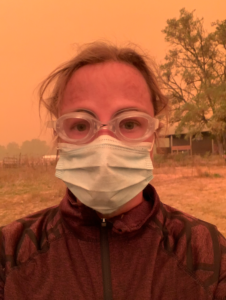In the last year, I have lived through four unprecedented climate-related crises in my community – all of which were in the last nine months, on top of the pandemic.
Over the last hour, I have watched the temperature rise 15 degrees from 101 to 116. It is June 28th. According to the weather service, before today, the highest temperature recorded in my area on this date was 108, in 1981. Now, my community in the “rainy” Pacific Northwest is registering one of the highest temperatures in the country—rivaling that of Death Valley, California.
But if we thought it couldn’t get worse, it’s looking like Mother Nature has other ideas. This past week’s 1-in-1000 year heat wave comes at a time when much of the West is already in extreme drought and bracing for a summer of potentially catastrophic wildfires.
Last year’s wildfires were indiscriminate, but the devastation and loss were disproportionately felt by rural communities. Similarly, while this year’s drought catapults us into dangerous fire levels, it is already hitting farmers and ranchers particularly hard. Much of the West is experiencing restrictions on agricultural irrigation water, creating a feed shortage for farmers who rely on forages to feed their livestock. This is causing a ripple effect: we’re seeing a decline in beef payments as ranchers anticipating the feed shortages send animals to slaughter early, causing an oversupply of cattle in an already volatile cattle market.

There is no doubt the climate crisis is hitting us all close to home these days. It’s looking like in summer 2021, we’ll again be experiencing unprecedented and extreme events. We have to be prepared.
As you are thinking about ways to support your constituents during these times, here are few things to think about:
- Emergency Response. Does your state have an emergency response communications plan in place? How are safety notifications disseminated to residents? During the Oregon wildfires last year, the emergency communications systems failed, leaving many residents without an evacuation directive until it was too late. What is your state’s emergency communications response, has it been practiced, and is it ready to be used in the event of an emergency? Additionally, farmers and ranchers are often not supported in evacuating their animals. California introduced a bill recently to fill this gap by developing an emergency response system specific to evacuating animals during disasters.
- Supporting Communities to Protect Themselves. We need investment in wildfire and climate-crisis emergency preparedness. States like California have considered bills that would help communities create defensible spaces around dwellings to mitigate wildfire impact. Oregon has put together several bills, including this omnibus bill aimed at helping communities be more prepared and resilient in the face of wildfire.
- Support Food & Farm Workers. Food and farm workers are often on the frontlines of climate crises. We need to ensure they are provided safe working conditions during extreme weather episodes. It’s important that the state agency that oversees worker protections in your state has developed rules for extreme and hazardous conditions for farm and food workers.
- Supporting Farmers and Ranchers. Colorado transferred money from the General Fund to conservation districts to provide added support during climatological disasters such as drought. USDA also has a number of programs to assist farmers and ranchers during drought and other climate-related emergencies. Here is a recent webinar about USDA’s drought relief program.
While we certainly need to be prioritizing emergency assistance to rural communities and agriculture producers as we face climate crises, it is also imperative we recognize that climate-related emergencies are likely not going away. We must also take steps to mitigate the climate crisis through climate-friendly agriculture. It’s time to be proactive in our support for farmers, ranchers, and rural communities as we face more extreme and unprecedented climate-related events.
Stay safe, friends.

Kendra Kimbirauskas, Director of Agriculture & Food Systems at her farm during the September 2020 Oregon wildfires

